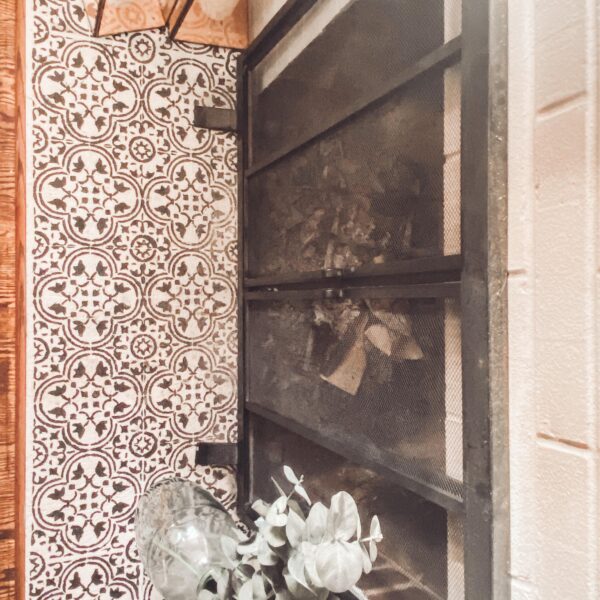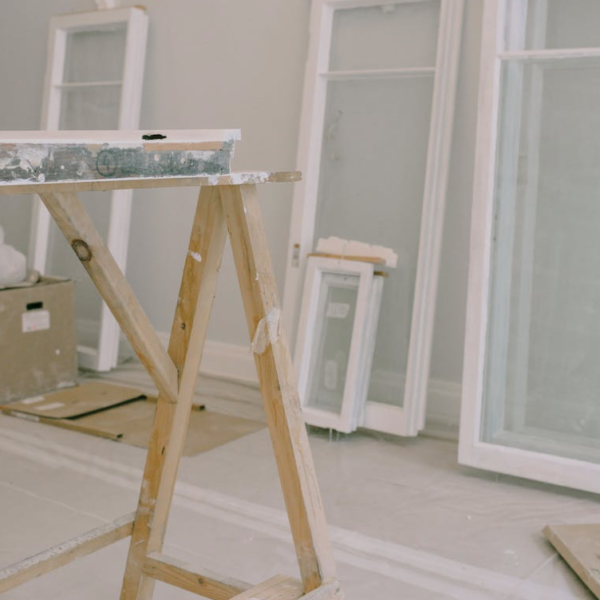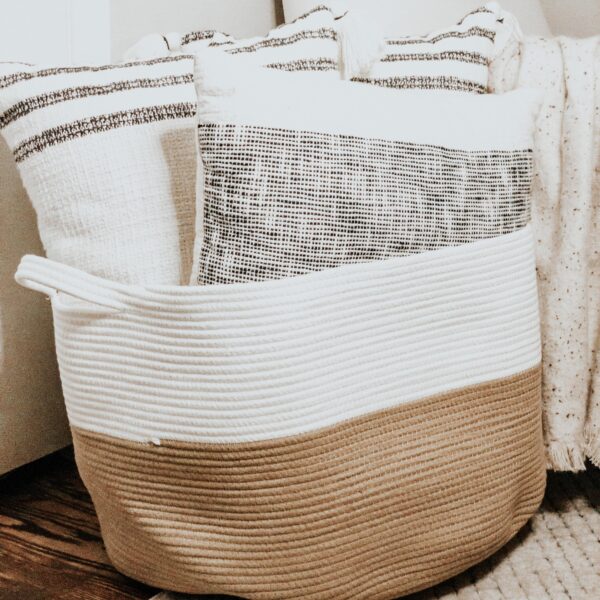Affiliate links are provided for your convenience, please read my disclosure for more information.
I’ve been reading the book: “Wabi-Sabi: Japanese Wisdom for A Perfectly Imperfect Life”. The author Beth Kempton says, “Accepting that we cannot hold on to or control the status quo is a powerful lesson of wabi-sabi, reminding us to treasure the good we have right now and know the bad will pass.” That is just so profound, especially in the strange times we are living in. As soon as I read that quote, I knew that I had to share and dive into this concept. Wabi-Sabi not only can speak to real life but also to interior design. So let’s dive in and talk about what Wabi-Sabi is, and five different ways you can start to incorporate it into your home!
What is Wabi-Sabi?
Wabi-Sabi is an ancient Japanese philosophy centered on the acceptance of transience and imperfection. The aesthetic is sometimes described as one of appreciating the beauty that is “imperfect, impermanent, and incomplete” in nature. It is a Japanese concept that finds beauty in the organic and the imperfect. Wabi refers to living with humility and simplicity while being at one with nature. Sabi refers to the ability to accept the life cycle of anything as it is—flaws and all. Instead of insisting on industrially produced perfection, this approach embraces the handmade, artisanal, and natural, preferring a connection with the craft. There’s no hard-and-fast way to emulate or translate the wabi-sabi philosophy into home decor but it’s now considered an art form.
How To Incorporate It Into The Home
1. Be Intentional About Your Decor
Have you made your bed today? I can’t remember where I heard this exactly but I’ve heard it said that if you make your bed, you’ve accomplished the first task of the day. You’ve set the intention to start your day on the right foot. That’s what wabi-sabi is – it’s about being intentional. It’s about being very mindful and introspective when selecting items for your home because what you choose defines how you want to live your life. Remember, our homes are a reflection of us. Look for broken or naturally imperfect items to bring into the space.
2. Weave In Personal & Natural Touches
Have you washed your linens recently? Are they satin, silk, or polyester? Caught you off guard, huh? I know it might be tempting to pick up glossy new home items when overhauling your space. But please don’t do this because it might not make the most sense if you’re going for a wabi-sabi philosophy. I wrote a blog post called, “The Slow Approach To Crafting A Home” and to paraphrase the meaning behind the post, “If we are patient and take the time to collect items and allow our homes to emerge slowly, it is more likely to result in spaces we feel satisfied with for longer.” So take your time in creating a collected home slowly and with intention. It will be so much fun!
3. Look For Items That Age Gracefully
Do you have that favorite pillow? You know the one. Your mom, grandmother, or great-grandmother embroidered it. It has a beautiful, hand-stitched design on it with her signature “stitch.” It may be a hand-knitted blanket like the one I have that was made especially for me. It is a timeless piece. Another example of timelessness is Kintsugi pottery. This is a perfect sample of an object in-line with the Wabi-Sabi philosophy. It is broken pottery that is glued back together with gold lacquer, giving the pottery a new lease on life while highlighting the fact that it was once broken. It’s about embracing a mix of old and new to tell the story of the home and the people who live there who are making memories.
4. Don’t Forget To Stimulate Your Senses
Have you let the sunshine pour in? Don’t you just love that feeling when the sunlight beams into a room and the floors get warm and the colors on the walls shine brighter? It’s breathtaking and it’s never the same “view” twice. Wabi-Sabi rejects the idea of perfection and instead focuses on what is natural and real. Elements that naturally age and patina like a beautifully hand-carved piece of solid wood for your cutting board or serving bowl. I love incorporating burning incense or diffusing essential oils. I also have a small fountain that I love to run as it is so calming. I never recommend real furs but I like an artificial woolskin or even a fuzzy fleece throw blanket. I also love creating my own art.
4. Appreciate the Imperfections in Your Home
Are you looking at your dresser and the mirror above it is slightly crooked? If you are, I encourage you to take a mindful pause. Just for now, enjoy it and enjoy seeing your beautiful face! Don’t worry about rushing out the door to pick up the latest trends in homeware. Instead, try to find appreciation in the imperfections that you already have in your home. It all gives character and tells the story that is your home and why you fell in love with it in the first place.
5. Romanticize Your Everyday Items and Routine
Have you ever made yourself breakfast in bed? If not, I recommend making a nourishing and nutritious breakfast on a cute tray with a bud vase and a small flower with coffee to enjoy! Doesn’t that just sound romantic? Do you have a meaningful photo that speaks to your soul and fills you up with joy? It’s the little things that mean the most and that’s what your home’s accents speak to when you are mindful of what is in it. It’s about finding the beauty in your everyday objects and routine through intentional movement to have daily tasks become memorable.
In conclusion,
Embracing the small imperfections breeds a sense of calm and appreciation for life. I look at homes every day, both for this beautiful blog and for my 9-5 job, and I can’t help but notice when the design cravings take over and then overwhelm me. But when I found wabi-sabi, that quote by Beth Kempton, ‘Accepting that we cannot hold on to or control the status quo is a powerful lesson of wabi-sabi, reminding us to treasure the good we have right now and know the bad will pass.’ came at the best time. What would happen if you embraced it? In your life? In your home? I know that I’m going to get a little bouquet of fresh Fall flowers and enjoy my tea today in my vintage Japanese tea kettle and sit down with the book. I’d love for you to join me! Cheers!
Love,






[…] know this is going to seem strange but hear me out. I talk a little about this in this blog post about wabi-sabi. But in homes throughout Japan, you’ll find house slippers waiting for everyone at the front […]